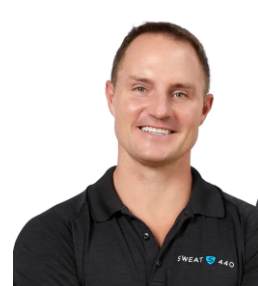As consumer preferences evolve, 2024 sets the stage for a more creative and individualized fitness environment in 2025 The fitness sector has weathered a challenging few years characterized by unpredictability and continuous adjustments. In the last year, it appears to have entered what might be described as a “new normal.” Members have been returning in […]

As consumer preferences evolve, 2024 sets the stage for a more creative and individualized fitness environment in 2025
The fitness sector has weathered a challenging few years characterized by unpredictability and continuous adjustments. In the last year, it appears to have entered what might be described as a “new normal.” Members have been returning in greater numbers — sometimes very enthusiastically — but they come with significantly altered expectations.
Equipped with a new outlook on health and wellness, modern consumers are asking for more than what the industry has historically provided. The fitness environment has been transformed by these changing needs, compelling operators to adapt in unprecedented ways.
Simultaneously, the swift advancement of technology and the growth of AI are changing the way businesses function. While these innovations offer possibilities, they also introduce fresh complexities and uncertainties for an industry already in transition.
To understand this changing landscape, Athletech News engaged with three experienced industry experts – Matt Wright, VP of growth and development at Healthtrax Fitness & Wellness, Mark Fisher, owner of Mark Fisher Fitness in NYC and Business for Unicorns, and Cody Patrick, CEO of Sweat440. They share their insights from the forefront, illuminating the current state of the industry and speculating on the developments of 2025.



The State of the Industry in 2024
When inquired about their perspective on the industry’s status, and whether they view 2024 as a “comeback year” after the pandemic, these experts shared a few similar sentiments.
“There has been an upward trend, and it has been a strong year, but I wouldn’t label it as a comeback year from COVID,” noted Fisher.
Wright elaborated, asserting, “We cannot draw comparisons to pre-COVID periods. Individuals returning have a much more comprehensive focus — they seek mental health support, recovery, and community, not merely fitness. Concurrently, we’re witnessing a new generation of health-aware individuals, alongside a reduction in ‘donators,’ those who enroll yet never appear.”
Patrick also reported ongoing growth throughout the year, yet highlighted seasonal downturns. “2023 was more of the comeback year. For us, 2024 was a continuation of that advancement,” he stated. “While we experienced fluctuations due to summer breaks and election-related spending slowdowns, the overall trend has been favorable.”

Key Trends in Fitness
Recovery remains a primary focus throughout the industry. Wright described how this has influenced his methodology.
“We’ve introduced cold plunges, invested in cryo beds, and enhanced our sauna and steam room offerings,” he shared. “These amenities are increasingly sought after, and we’re strategically working to fulfill members’ demands.”
Fisher reflected this trend by highlighting the growth of recovery-centered studio brands. “I’m particularly intrigued by concepts like Othership, a stylish ‘class-style’ spa, and Sweathouz (SWTHZ), an infrared sauna and cold plunge franchise,” he mentioned. “However, further questions linger regarding whether this will remain a trend with declining demand, or if it will solidify as a permanent pillar of consumer wellness behavior.”
For Patrick, he has been experimenting at Sweat440. “We’re adding recovery lounges featuring compression and percussion therapies in some of our facilities,” he disclosed. “This focus is part of our brand’s strategy for implementation throughout 2025.”
Strength training is also gaining traction, according to Patrick. “We have always incorporated a robust strength component, but we’ve increased it further to cater to demand,” he notes. “Gamification has become a vital motivator for members, which is proving to be a significant driving force.”
Wright concurred, observing the rise of personal training. “Personal training departments are thriving, particularly with the Boomer cohort seeking to remain healthy and active. People are prioritizing efficient exercise, which is leading them to hire fitness experts. This represents a shift towards a more personalized and guided fitness journey.”

The Role of Artificial Intelligence
Artificial intelligence (AI) remains a trending topic across various sectors, including fitness.
Patrick discussed how AI is reshaping their member experience. “The core workouts may not be greatly affected by this, but the member experience and engagement indeed are,” he clarified. “We are leveraging AI to enhance customer communication, data interpretation, and predictive analytics.”
Wright uses AI for enhancement. “I regard it as an aid,” he stated. “It assists us in refining marketing, evaluating brand effectiveness, and more efficient resource allocation. Nevertheless, it will never substitute the human element or the necessity for personalization in fitness.”
Fisher provided a more cautious viewpoint. “I believe much of the AI utilization in gym settings has been somewhat exaggerated,” he noted. “Indeed, tools like ChatGPT can expedite content development, yet they still demand a human touch to prevent sounding generic. Still, the landscape is rapidly changing. With technological sophistication advancing at breakneck speed, I expect we’ll see continued integration of AI in booking and billing systems to provide insights for owners. Ideally, owners can harness this deeper and more tailor-made understanding of behaviors to boost engagement and enhance retention.”
Wellness, Longevity & Integration with Healthcare
As the emphasis on wellness and longevity increases, fitness operators are seeking adaptive strategies. Wright underscored Healthtrax’s collaborations with healthcare entities.
“We’ve forged partnerships with hospitals to facilitate a smooth transition from physical rehabilitation to the fitness facility,” he noted. “We are also engaged in medical weight loss programs and assist individuals in understanding the significance of strength training and maintaining nutritious eating habits. This connection to hospitals has proven to be a significant differentiator for us.”
Fisher pointed to the potential for gyms to assume a greater role in personalized wellness. “Heading into 2025, the most competitive gyms and studios will prevail by supporting their members in the other 23 hours of their day,” he stated. “Simply providing workout access is becoming more standardized, as managing your health and fitness entails more than just gym sessions. Whether through supplementary or integrated coaching services, the top-performing gyms and studios will offer holistic guidance and act as case workers who link clients and members to additional resources.”

Challenges & Opportunities in 2025
With 2025 on the horizon, Patrick highlighted the challenges posed by an overcrowded market.
“The difficulty lies in differentiating yourself to highlight what makes you special,” he expressed. “Distinct features and genuine engagement will be crucial.”
Fisher maintained a positive outlook for the future while recognizing the competitive nature of the sector.
“Consumer spending on fitness is rising, but it’s also becoming more discerning,” he stated. “From franchises to local independents, as players enhance their offerings, the competitive pressure mounts. For example, in our segment, small group personal training facilities have experienced a slight yet important increase in monthly churn over the last two years. To clarify, the class/session experience will remain essential. Nevertheless, fostering relationships and coaching clients toward success will be paramount and will be the centerpiece of retention.”
Wright provided another viewpoint, stressing the need for innovation and investment in teams. “The opportunity for fitness operators exists in investing in their personnel — offering leave, benefits, retirement plans, spousal assistance, resources for challenges, and competitive compensation,” he remarked. “Employee turnover often results from failing to adequately care for team members.”
Ultimately, these professionals agree that it fundamentally comes down to serving individuals and their health needs, with Fisher stating, “The most successful gyms and studios will concentrate on relationship-building, delivering comprehensive coaching, and integrating health and wellness into their services.”















